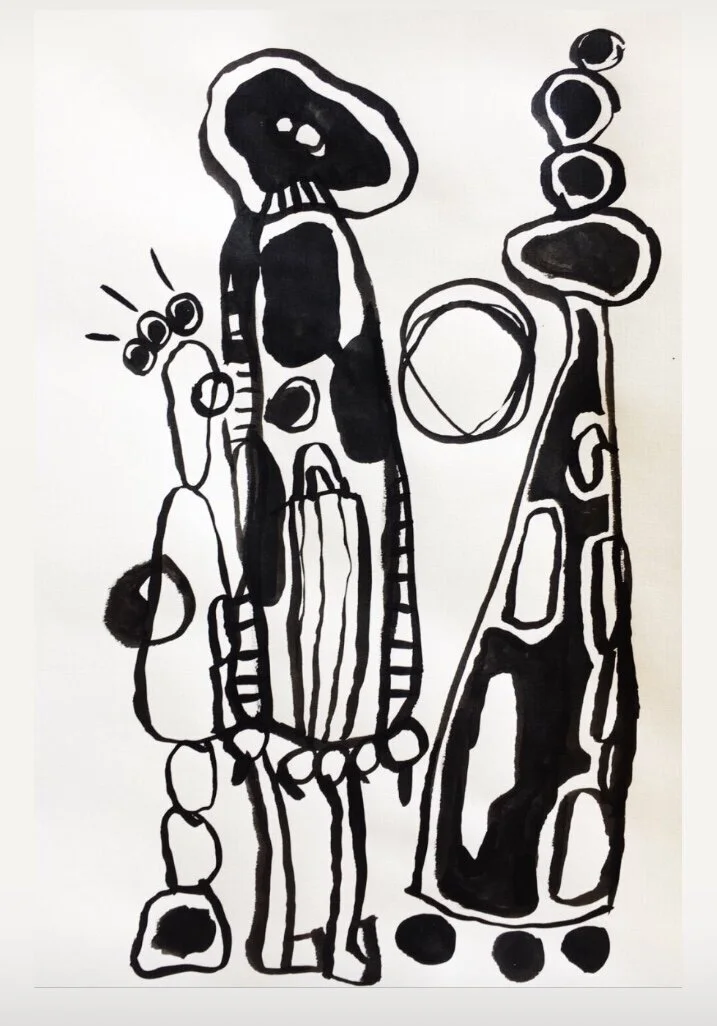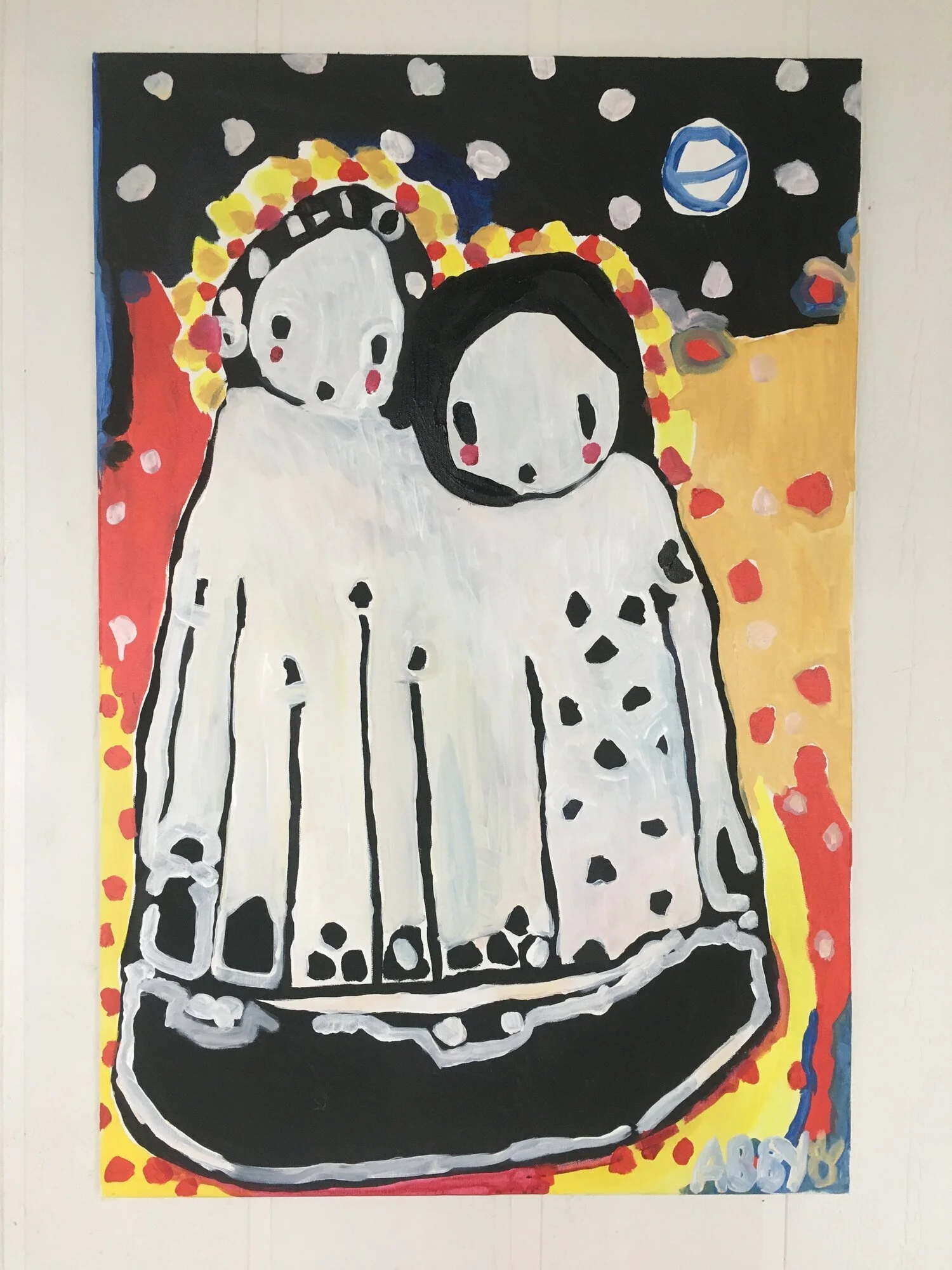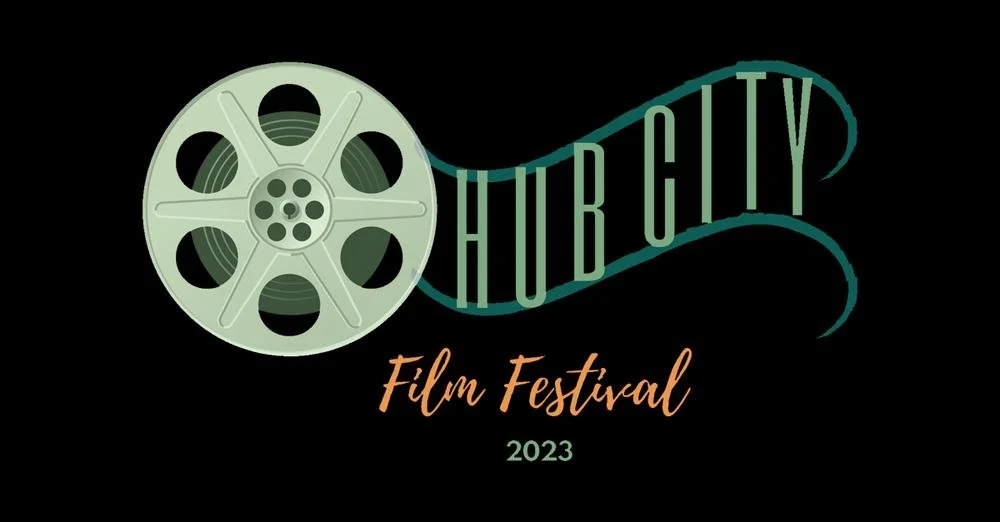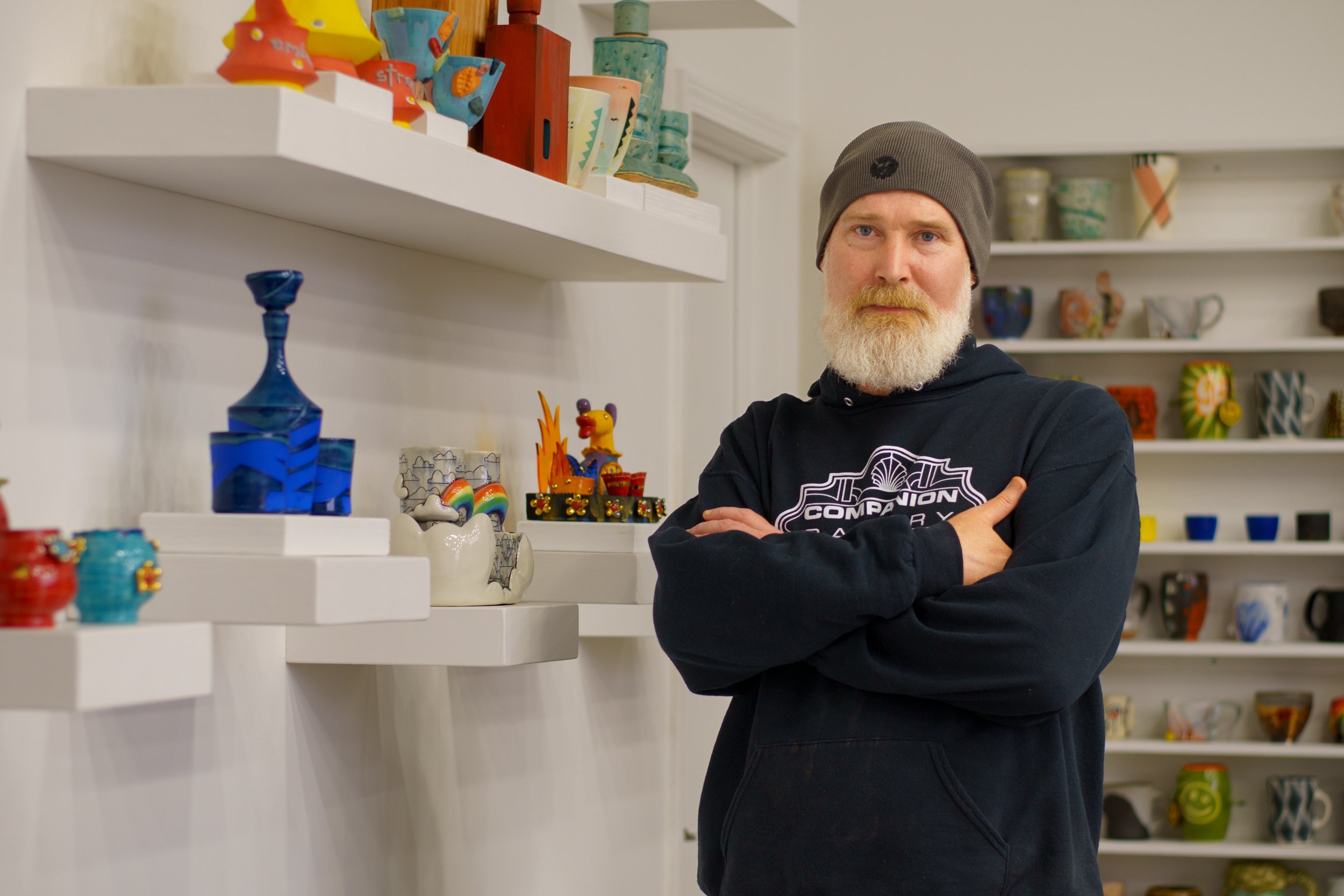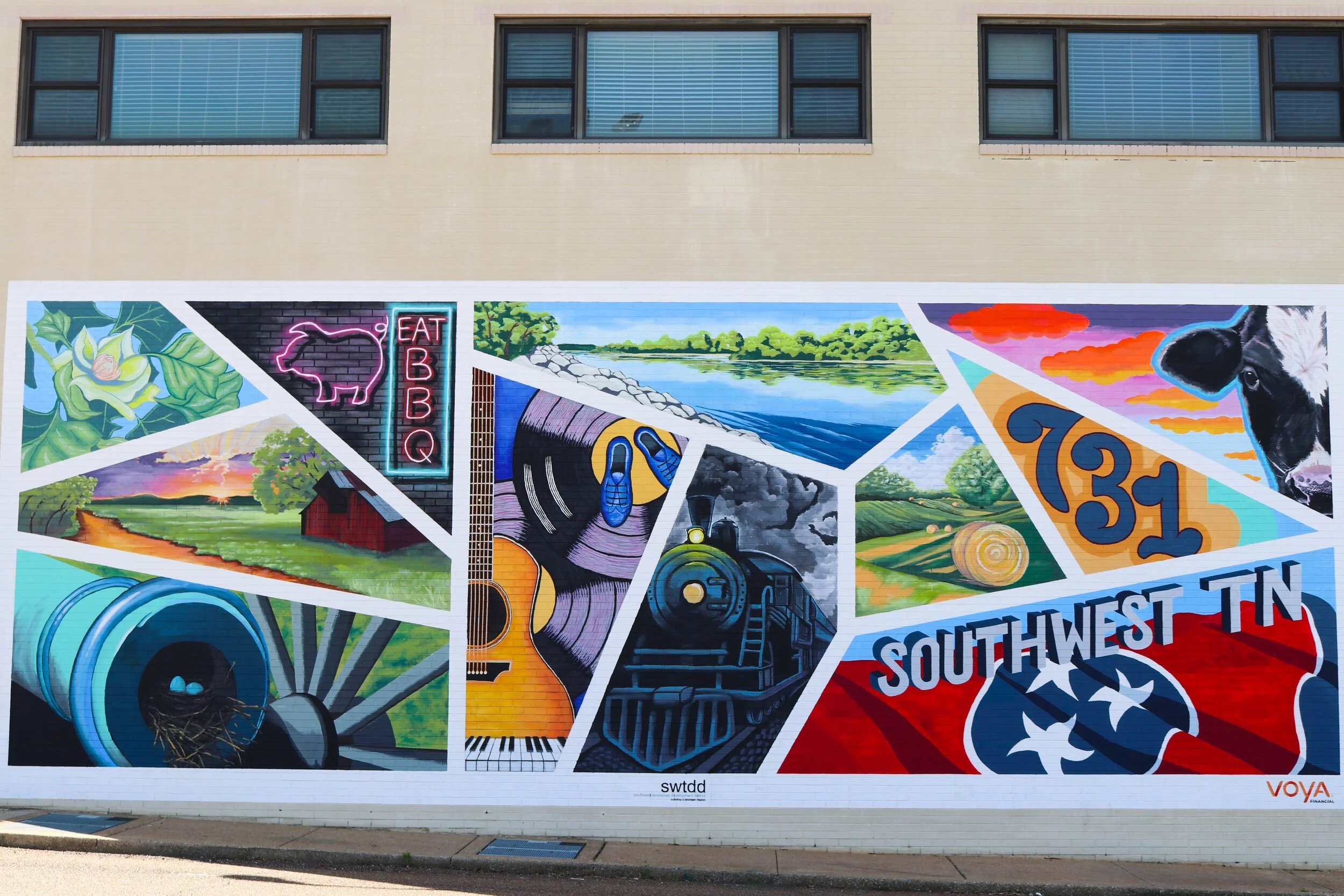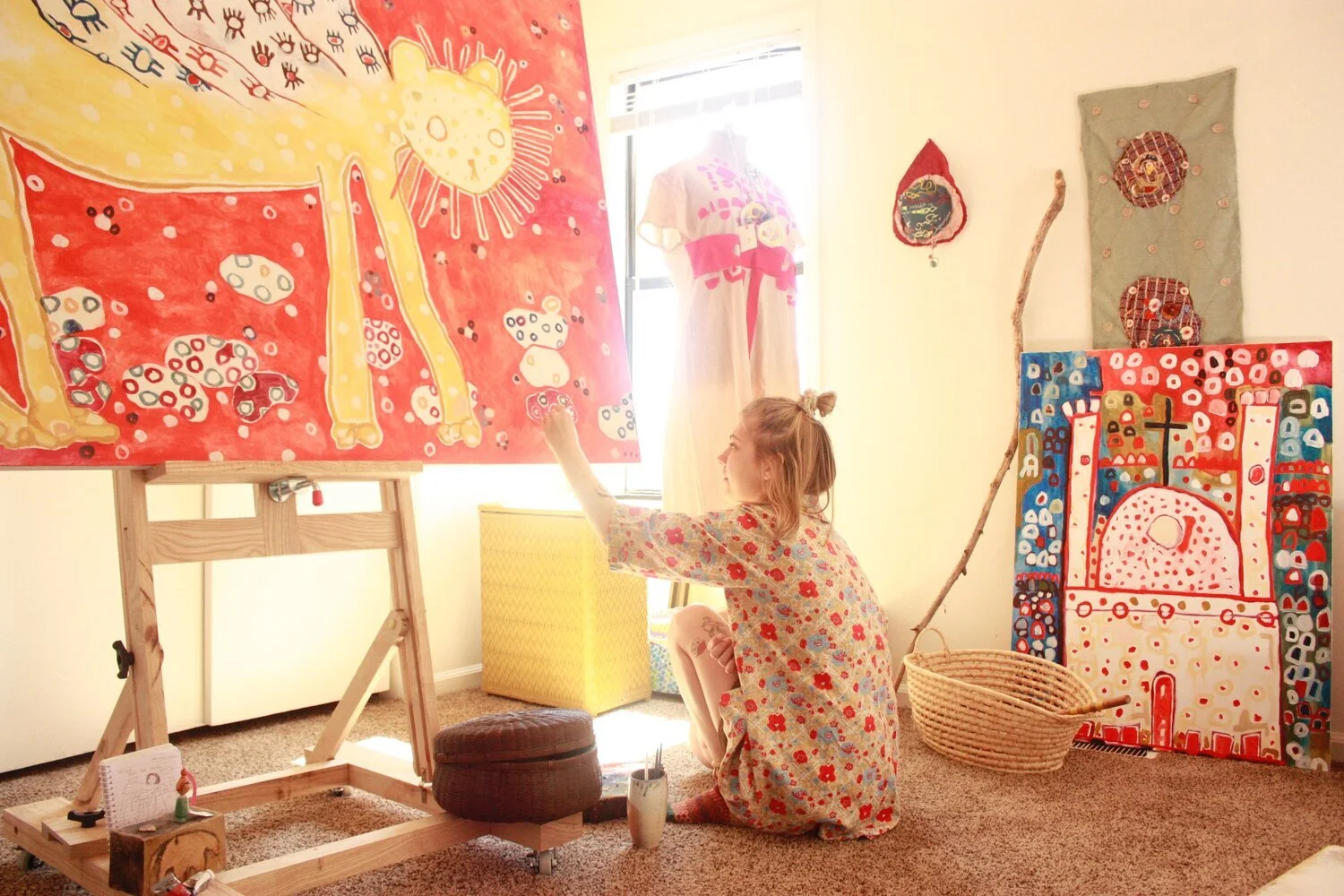Artist Spotlight | Abby Ruby
This interview originally appeared on the blog Quin. Special thanks to Cynthia Ann Sipes for sharing Abby’s feature with us. Follow Quin on Instagram for more features on artists from all over the world.
BY CYNTHIA ANN SIPES
The “inner child” is a concept I first heard about from Julia Cameron’s book The Artist’s Way. I talk about this book a lot because it has had a profound impact on me both as an artist and a person. A quote from Cameron tells of her connection to the inner child and the artist: “Our internal artist is always our creative child.” Children are inherently explorative and playful. As a child, I was often in my own head–living out whatever story I wanted for that day, seemingly aloof to those watching me, but I was in another world. The inner child in us is sadly often silenced as we grow. There are aspects of “maturing” that are important–like learning how to interact with others and not have tantrums when we don’t get our way–but often times, much is lost. We lose the idea of playfulness, and in a lot of ways the journey of an artist is gaining that playfulness back, feeding the inner child.
Abby Wolfzorn Ruby shares her process of creation, and it reminds me so much of what Julia Cameron says about feeding our inner child. Abby’s work is both playful and intuitive- she uses simple motifs and a limited color palette to create introspective work from her soul. Her process is about the explorative–something that really speaks to me about her work. There is a purpose to it that each piece carries. I truly believe that when an artist creates in a place of honesty with themselves, the art has a greater impact on the world. I hope you find Abby’s story an inspiration to feed your inner child and artist.
When did you first become interested in art and painting?
I think most kids color, paint, and draw, and are excited about creating something. I was like that but never felt like a “natural”. I would see other kids in my class render perfectly and think that wasn’t for me. Growing up, I didn’t think of ever being an artist. I loved history and being outside and wanted to be an archaeologist up until my senior year.
My senior year of high school, I began to watercolor paint after some tragic events happened. I remember waking up before school to paint, going to school, and coming home to paint. It was suddenly all I could think about.
What has your journey been like becoming an artist?
It’s all happened the way it was supposed to, I’m sure. I do believe that art has the ability to help us process and heal, as well as confront and challenge. What continues to appeal to me about art is all the different functions it may have, and many different purposes. This also makes art harder to define, but I’d much rather have it this way.
Once I began painting, I don’t think I ever stopped having ideas or wanting to make another piece. A creative block may happen at some point (as it does with most people) but I have not reached that yet. One piece normally leads to the next, and so on.
I went to school for Art but ended up leaving after three years. That time gave me the opportunity to explore more media. Now, I also work with clay and textiles, often combining textile work in my paintings.
Is there anything in particular that you feel drawn to create? Why?
I do feel drawn to create art that lives in peoples’ homes. I want the home to operate as a gallery space. The physical space we live in has maybe the most potential to feed us visually, if we spend the most time there. I’d love to simply impact someone’s daily routine: like, how as children, we remember those paintings in our grandparents’ houses, they stay with us.
“I want the home to operate as a gallery space. The physical space we live in has maybe the most potential to feed us visually, if we spend the most time there. I’d love to simply impact someone’s daily routine: like, how as children, we remember those paintings in our grandparents’ houses, they stay with us.”
Abby Ruby
How do you approach working on a new piece?
I’m laughing as I type this because it’s never the same.
I rarely plan or sketch-–I prefer intuitive ways of working with paint and fabric. With clay, I normally have a visual idea of what I want. I often have a strong idea that sometimes weighs heavy on my head until I can finally make it.
I try not to ask myself exactly what it means and especially try not to ask myself, “Oh, what if no one buys this?” Once I start doing that, I lose my intuitive and childlike way of working and begin worrying. The meaning and the context make itself known to me through the process of making. This is because most of what I make is a direct result of processing something in life: an emotion, a color, a memory… Much of that is so deep in our minds or hearts, art is my way of bringing those to the light.
“most of what I make is a direct result of processing something in life: an emotion, a color, a memory… Much of that is so deep in our minds or hearts, art is my way of bringing those to the light. “
Is there a specific technique that changed your workflow for the better?
This is not necessarily an art technique but waking up early changed my workflow for the better. I do work another job (sometimes two part time jobs) in order to make ends meet. My jobs also give me community, connection, and a reason to take a break from the studio. I find myself more balanced that way, and actually much less likely to waste time in the studio.
How do you find inspiration?
I find so much inspiration from memories… what they are, how we remember, and what it means. Especially childhood memories. I love hearing others’ memories and stories, good and bad. I think I would just say that stories inspire me.
Other inspirations: nature, walking, thrifting and dumpster diving, finding buttons on the street, traveling, music, candles and soap, anything handcrafted, bonfires, film, and the list goes on. There’s so much to life. So many gifts we are given. I am trying to soak it all in and let it inspire me.
What has been your biggest struggle as an artist? How did you overcome it?
My answer will most likely change over time. So far, it has been how to balance the academic side of art with my desire for a raw and genuine approach to making. I am far from overcoming it, but I do try to be aware of the importance of both. I don’t think formal training is inherently wrong at all, but I have seen it hinder curiosity and exploration at times. On the other hand, the context of art history, learning how to draw, learning to build a canvas, among other things has greatly aided me in my time during and after school. My time in school gave me tools I now can use forever. But I never want others to feel hindered or limited by an assignment or a person within the school system–that too often happens.
Do you have any art rituals?
I try to work with my hands every day, but sometimes, if it is particularly busy, that may mean tending the small garden in my yard rather than being in the studio. My main “ritual” I suppose is simply working with my hands every day.
If I am in the studio, I have a certain music playlist I enjoy. I like to take time to breathe and reflect. I often finish a piece, or finish my work for the day, and I spend time with it afterwards, reflecting or writing.
One thing I always do with paintings is live with them for a time before they are shown or sold. I want to extract all I can from a piece. Often, meaning builds as I continue to process and reflect. Like how rereading a book can or rewatching a good movie can add layers of understanding.
What advice would you give to other artists?
Be free! Experiment and explore. Your discoveries will never end.
What themes do you see in your art?
The most general term I tell others is that my art is “an exploration in how the spiritual world and the physical world interact with one another”. I am influenced by my faith and want to explore how faith lives in the physical world. There is more that we cannot see than what we can see–and that’s what I’d like to paint.
As an artist, do you feel you have a role to play in society?
Yes! One of my favorite Toni Morrison quotes says this nicely: “This is precisely the time when artists go to work. There is no time for despair, no place for self-pity, no need for silence, no room for fear. We speak, we write, we do language.”
As I said before, art has various functions and purposes. It can comfort, but it can also challenge. It can soothe or disturb. It can be physically functional or exist to be beautiful. Art not only has a role, but I believe is necessary.
What is something that has really pushed you as an artist?
Deadlines push me, but in a good way. They help me get work done. School was helpful in that way, and now commissions. They help push me to keep working.
What are you currently working on?
I’m currently signed up for a quilting class next month and will be working on some quilts! It’s so different for me… most of my work is not physically functional. I am looking forward to seeing this blend of styles. I am working on a painting series called “Prayer”. These next few paintings are all at least 5 x 4 ft. I envision them all in a gallery together, working together. I often work in bright colors, but these are all reduced to black and white. I will share more once they are finished, but I am very much looking forward to this as well.
Do you have any resources to share?
So many books that are good! The Artist Spirit by Robert Henri was the book I read senior year of high school that made me go, “Yeah, I think I’ll do this”. (Shout out to my friend who gave me the book that year for Christmas! Thanks, Tyson!)
Another book is Walking on Water by Madeline L’engle. She explores how faith, art, and science all relate and why we so often think of them as contradictory.
How to Do Nothing by Jenny Odell.
I find social media, in general, to be inspiring and helpful in my journey as an artist. It must be used carefully, I think, and with intention. How to Do Nothing covers this without demonizing technology, but simply warns us of the dangers of letting it control us. Best wishes to all of you exploring your own art journey! Feel free to reach out any time!
You can find more about Abby and her work on her website and Instagram.
Cynthia Sipes is a native of Alabama who moved to Jackson in April of 2016, and currently lives in the United Kingdom. She is a visual artist working in painting, illustration and photography.


